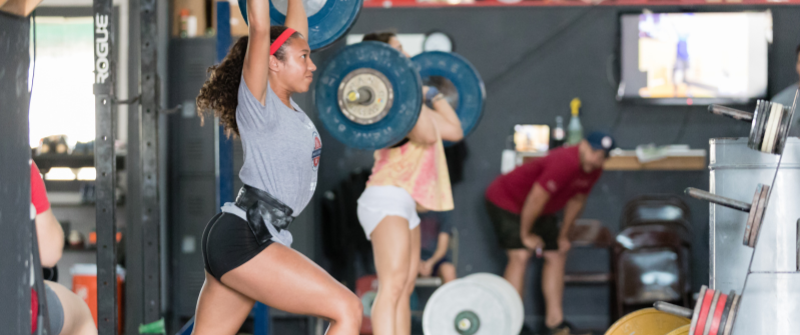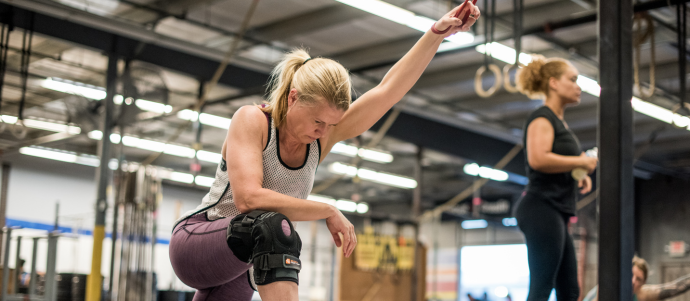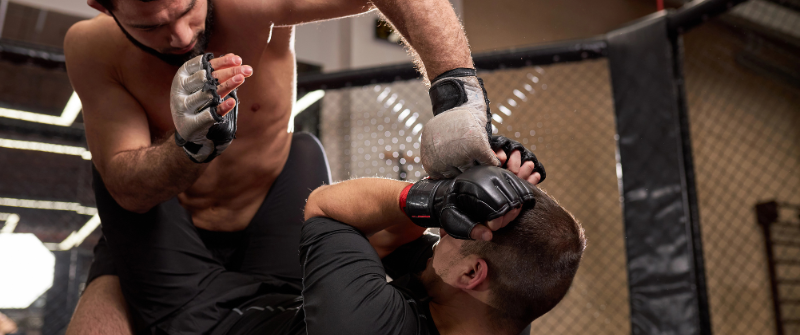
- by NEXO Team
- September 23, 2024
Between high-intensity workouts and hands-on coaching, CrossFit instructors deal with many unique risks in their profession. Because of this, understanding the nuances of liability insurance is crucial for protecting both their careers and their businesses. If you’re unfamiliar with liability insurance, read on as we cover the differences between professional liability and general liability insurance, two essential types of coverage in this field. This information will help you choose the right CrossFit insurance to protect yourself against the many inherent challenges that come with being a CrossFit coach.
Also Read: A Guide To Liability Insurance For Gym Owners
Understanding General Liability Insurance
General liability insurance is an important safeguard for CrossFit coaches, as it protects against the common risks associated with running a fitness business. This coverage is designed to shield coaches from financial losses that result from accidents, injuries, and certain legal issues that may arise.
Coverage Overview
Liability insurance for CrossFit coaches usually encompasses three areas:
- Bodily Injury: This covers claims related to physical injuries that are sustained by clients during workouts or on the premises. It may help with medical expenses and potential legal fees that arise from these incidents.
- Property Damage: This aspect of liability insurance protects against damage to a client’s property or the facility where classes are being held.
- Personal and Advertising Injury: This provides protection against claims of defamation, slander, or false advertising.
Situations Where General Liability Applies
General liability covers client injuries due to hazardous conditions like wet floors or uneven surfaces (also referred to as slip-and-fall incidents) in the training area. Accidents caused by faulty or improperly maintained equipment are also covered, so you remain protected if a client is injured due to a malfunctioning piece of CrossFit gear.
Limitations of General Liability Insurance
While general liability insurance provides important protection for CrossFit coaches, it does have limitations. For example, this coverage typically doesn’t extend to claims related to professional advice or instruction, which is a significant gap for CrossFit coaches who provide specialized training. Due to these limitations, coaches often require supplementary policies, like professional liability insurance, to secure comprehensive protection that covers all aspects of their services.
Also Read: General Liability Versus Professional Liability Insurance: What Is The Difference?
Understanding Professional Liability Insurance
Professional liability insurance, also known as errors and omissions insurance, is another essential coverage option for CrossFit coaches who provide specialized training.
Coverage Overview
Professional liability insurance primarily covers errors and omissions in a CrossFit coach’s professional services. This includes protection against claims of negligence or mistakes in training advice. For example, if a client alleges that the workout plan their CrossFit coach provided caused an injury, this coverage helps with legal defense and potential settlements.insurance
It also covers misrepresentation claims. If a client feels their coach’s advice led to injury or didn’t meet their expectations, this policy may protect the coach. Having this type of coverage is especially important in the fitness industry, where results tend to vary significantly from person to person.
Situations Where Professional Liability Applies
Professional liability insurance is vital when dealing with injuries that occur due to incorrect training techniques. If a client is injured from improper coaching or exercise prescriptions, professional liability insurance may cover the resulting claims. Professional liability also applies to situations where poor advice leads to client harm. For example, if a coach’s nutritional guidance causes long-term health issues for a client, or their training program fails to address a client’s specific needs and leads to injury, this coverage may protect the coach.
Limitations of Professional Liability Insurance
Just like general liability insurance, professional liability insurance also has its limits. It typically doesn’t cover property damage or personal injuries unrelated to professional services. For instance, if a client slips or falls in a gym due to a wet floor, this would fall under general liability, not professional liability.
Professional liability insurance often works best when it’s used in conjunction with general liability insurance. This combination provides more comprehensive protection against the various risks that CrossFit coaches contend with in their day-to-day operations.
Also Read: How To Handle Insurance Claims For CrossFit Injuries
Key Differences Between General Liability and Professional Liability Insurance
Types of Risks Covered
General liability insurance primarily focuses on physical injuries and property damage. It protects against claims that arise from accidents on CrossFit premises or during sessions, like slip-and-fall incidents or equipment-related injuries.
Professional liability insurance, on the other hand, focuses on errors, omissions, and professional negligence. It covers claims related to the advice and training that a CrossFit coach provides, including any allegations of improper instruction that lead to a client getting injured.
Claims Handling
General liability usually handles claims that involve accidents or third-party injuries. These are often more straightforward cases related to physical incidents in the gym or during classes.
Professional liability addresses any claims related to professional conduct and service delivery. These cases typically involve more complex scenarios, like disputes over the effectiveness of a coach’s training or the appropriateness of their advice.
Policy Structure and Cost
Coverage limits and premiums may differ significantly between these two policies. General liability often provides broader, less expensive coverage, whereas professional liability is tailored to specific coaching services and is potentially more costly.
CrossFit coaches should always have a thorough understanding of each policy’s deductibles and payouts. These financial structures affect out-of-pocket expenses and the extent of your coverage, which has a major impact on your overall risk management strategy as a CrossFit coach.
Why CrossFit Coaches Need Both Types of Insurance
CrossFit coaches benefit from having general and professional liability insurance, as both help them stay protected against a wide range of risks. A dual coverage approach safeguards their business against physical accidents in the gym and potential claims related to professional advice or training methods. By combining these policies, coaches are also able to avoid gaps in coverage that could leave them exposed to liability.
Additionally, maintaining both types of CrossFit insurance helps enhance a coach’s professional credibility. It shows that they’re committed to safety and professionalism, which instills confidence in their clients and aligns them with industry standards for comprehensive risk management.
How to Choose the Right Insurance Policies
Assessing Your Specific Needs
In order to choose the right insurance policies, CrossFit coaches should evaluate their services. They must consider the types of classes, advice, and training they provide to determine their risk exposure.
They should also take into account their client demographics. The age, fitness level, and experience of their clients may have a significant impact on their insurance needs. For instance, a diverse client base with varying abilities may necessitate broader coverage to adequately address potential risks.
Working with an Insurance Broker
NEXO has the industry knowledge to help coaches find the right policies at the best rates to save money while getting comprehensive coverage. NEXO also offers policy customization. We tailor CrossFit insurance coverage to fit the unique needs of the policyholder.
Regular Policy Reviews
It’s crucial to conduct regular policy reviews to adapt to business changes, such as expanding services, changing locations, or hiring additional staff. It’s also important to comply with industry standards and regulatory requirements by regularly updating policies. Taking this proactive approach helps coaches maintain their professional standing while keeping them protected against any potential liabilities.
Also Read: Customized Gym Liability Insurance
Conclusion
Ultimately, general and professional liability insurance plays a huge role in protecting CrossFit coaches. These complementary coverages shield coaches from physical accidents and claims related to their expertise. We recommend that coaches have both types of CrossFit insurance for comprehensive protection.
Remember, as your business grows, so should your insurance and risk mitigation strategy. Choose NEXO for tailored, affordable coverage that truly understands the fitness industry. With our 15-year track record and over 20,000 satisfied clients, we’re committed to protecting your CrossFit business. Reach out to us today!
Categories
Fill out a short form to contact us with your questions or to receive a customized quote.
Recent Posts
-
 NEXO’s Affinity Program: How Fitness Suppliers and Associations Can Partner for Profit and Protection
December 5, 2025
NEXO’s Affinity Program: How Fitness Suppliers and Associations Can Partner for Profit and Protection
December 5, 2025 -
%20(1).png) How to Insure an MMA Gym Without Paying for Coverage You Don’t Need
December 5, 2025
How to Insure an MMA Gym Without Paying for Coverage You Don’t Need
December 5, 2025 -
 Mastering Liability for Jiu-Jitsu Tournaments and Martial Arts Events
December 5, 2025
Mastering Liability for Jiu-Jitsu Tournaments and Martial Arts Events
December 5, 2025 -
 From Zen to Zoning: What Every Yoga and Pilates Studio Owner Should Know Before Signing a Lease
December 5, 2025
From Zen to Zoning: What Every Yoga and Pilates Studio Owner Should Know Before Signing a Lease
December 5, 2025 -
%20(1).png) Why Your Referral & Loyalty Program Can Impact Your Insurance Rates
December 5, 2025
Why Your Referral & Loyalty Program Can Impact Your Insurance Rates
December 5, 2025
